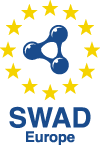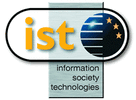

Service-oriented computing has emerged as an important new field, distinguished from conventional distributed computing by its focus on large-scale resource sharing including distributed very large data-stores and high-performance networking, and applications such as remote control of experiments and distributed group working in virtual organisations. Given the extreme nature of this computing environment, we consider whether existing leading-edge solutions which focus on the security and trust management of open distributed systems extend to this new paradigm. In this position paper we outline the envisaged architecture and highlight the unique security and trust management challenges which are encountered in such a setting.
Note: 2004-07-16
Comments on this document should be sent to the public SWAD-Europe mailing list, public-esw@w3.org,
The concept of service-orientec computing has been growing over the last five years with the emergence of the Grid [Foster & Kesselman 1998], and the Web Service infrastructure [Web Services]. This approach seeks to extend the scope of distributed computing to encompass large-scale resource sharing including distributed very large data-stores and high-performance networking, and shared use of computational resources, be they supercomputers or large networks of workstations.
This concept has been generalised to cover any virtual organisation, defined as any dynamic collection of individuals and institutions which are required to share resources to achieve certain goals [Foster, Kesselman & Tuecke 2001]. Thus this approach will have applications in commerce and industry, supporting distributed collaborative design and engineering, or supporting distributed supply chains. In these contexts, the emerging Web Services technologies are likely to play a key role, and architecture will be enabling the establishment of trust. Existing approaches to security within distributed systems are stretched by the extreme conditions imposed by the service-oriented approach, and significant effort has been undertaken to provide support for secure use of resources. However, trust thus needs to be established at all levels of the trust hierarchy:
These include, positive/negative authorisation policies and delegation policies to manage access control; refrain policies to define the actions that subjects refrain from performing on target objects even though they may authorised to do so; and obligation policies to define the actions that must be performed by managers within the system when certain events occur - therefore responding to changing circumstances.
In this paper, we discuss the trust requirements imposed by the Service-Oriented Architecture, and propose an approach based on the publication of trust policies and the automatic negotiation of access rights. A similar discussion on requirements is given in [Foster, Kesselman, Tsudik & Tuecke 1998] which defines the policy which underlies the Globus [Globus] security model, which uses on X.509 certificates as its authentication mechanism. However, that paper does not consider the problems of access control and trust management. It also does not consider how to establish trust between entities which do not have previous knowledge of each other in the absence of a fixed global hierarchy of certification authorities, where the entities may need to discover or dynamically form certification chains in order to enable trust establishment.
Consider the following scenario for the use of the Grid.
An engineer within organisation A wants to perform an analysis on a material. By accessing a data portal at site B, she discovers a suitable data set held by a data archive C. The analytical tools are provided at university D within her Virtual Organisation. She initiates the analysis by passing the reference to the data set from B to D, which is then accessed by the analysis tools. D then determines that it does not have enough computational resource available, and determines that a computer is available at different institution E and delegates part of the job there. Finally, D completes the job and return the results to A. D also caches the results of the analysis locally and registers the fact that the precomputed results are available with the portal B and the data provider C. However, the analysis has taken several hours, so the engineer has established a user proxy agent to represent her, collect the results, make payments as appropriate and close down the collaboration.
This scenario highlights several features of the Service-Oriented Architecture which are relevant to trust.
Another more abstract view on the Service Oriented Architecture is that it requires three layers to work effectively [Jeffery 1999]: firstly a data and computational layer, which provides the raw data sources, processors, and connecting protocols; secondly an information layer over this providing information and location of the underlying resources; and thirdly a knowledge layer to allow reasoning over that information to give intelligent assistance to the users. The traditional Grid infrastructure, such as the Grid Security Infrastructure (GSI) from Globus [Butler et. al. 2000], has depended on interfaces at the protocol level to provide the security infrastructure. However, this approach has concentrated on authentication and not provided a sufficient infrastructure for the rest of the trust hierarchy exemplified above, especially with respect to authorisation and the statement and implementation of policies. Further, this mechanism does not appear to have considered the case where the collaborating resources have no prior knowledge of each other (or their certifying authorities).
We propose to supplement this infrastructure by raising the level of the trust analysis into the information and knowledge grids of the layered architecture. This would build upon the established literature in trust analysis, such as [Jøsang 1996] [Dimitrakos 2001] which provides a framework for analysing how trust should be transmitted between agents in distributed systems, especially dealing with how to propagate trust between agents without prior knowledge of each other. The basis of this infrastructure would be the explicit declaration and publication of trust policies by participating resources using a policy specification language, such as Ponder [Damianou et. al. 2001]. Agents wishing to utilise resources would then be able to present their credentials, policies and requirements to the participating resources and an automated process would verify the credentials, possibly referring to trusted third parties, to establish identity, deduce authorisation based upon supplier and consumer policies and to authorise (or not) access under the specified the conditions of use. The nature of this task, where statements made of the properties of systems (i.e. policies and requirements from agents) are transmitted across the network, and automatic reasoning is used to determine action from those statements, is in line with proposals under the Semantic Web activity of the World-Wide Web Consortium [Semantic Web]. Consequently, we propose stating the policies and trust statements in using the Resource Description Framework [RDF], and use the emerging tools of the Semantic Web to support the reasoning.
[Butler et. al. 2000] A National-Scale Authentication Infrastructure. R. Butler, D. Engert, I. Foster, C. Kesselman, S. Tuecke, J. Volmer, V. Welch. IEEE Computer, 33(12):60-66, 2000.
[Damianou et. al. 2001] The Ponder Specification Language N. Damianou, N. Dulay, E. Lupu, M Sloman, Workshop on Policies for Distributed Systems and Networks (Policy2001), HP Labs Bristol, 29-31 Jan 2001.
[Dimitrakos 2001] System Models, e-Risks and e-Trust. Towards bridging the gap? Theo Dimitrakos, Towards the E-Society: E-Business, E-Commerce, and E-Government 1st IFIP Conference on e-Commerce, e- Business, e-Government, Kluwer Academic Publishers, Zurich, Switzerland, October 2001.
[Foster & Kesselman 1998]. The Grid: Blueprint for a New Computing Infrastructure, Edited by Ian Foster and Carl Kesselman, Morgan Kaufmann Publishers,1998
[Foster, Kesselman & Tuecke 2001]. The Anatomy of the Grid: Enabling Scalable Virtual Organizations. I. Foster, C. Kesselman, S. Tuecke, Intl. J. Supercomputer Applications, 2001.
[Foster, Kesselman, Tsudik & Tuecke 1998]. A Security Architecture for Computational Grids. I. Foster, C. Kesselman, G. Tsudik, S. Tuecke, Proc. 5th ACM Conference on Computer and Communications Security Conference, pg. 83-92, 1998.
[Globus] The Globus Project home page http://www.globus.org
[Jeffery 1999] Knowledge, Information and Data Keith Jeffery, CLRC Information Technology Department, September 1999 http://www.escience.clrc.ac.uk/Publications/9/KnowledgeInformationData.doc
[Jøsang 1996] The right type of trust for distributed systems. A. Jøsang. In Proceedings of the 1996 New Security Paradigms Workshop, ACM, 1996.
[RDF] Resource Description Framework (RDF) http://www.w3.org/RDF/
[Semantic Web] Semantic Web Activity Statement, World Wide Web Consortium, 2001 http://www.w3.org/2001/sw/Activity
[Web Services] W3C Web Services Activity http://www.w3.org/2002/ws/